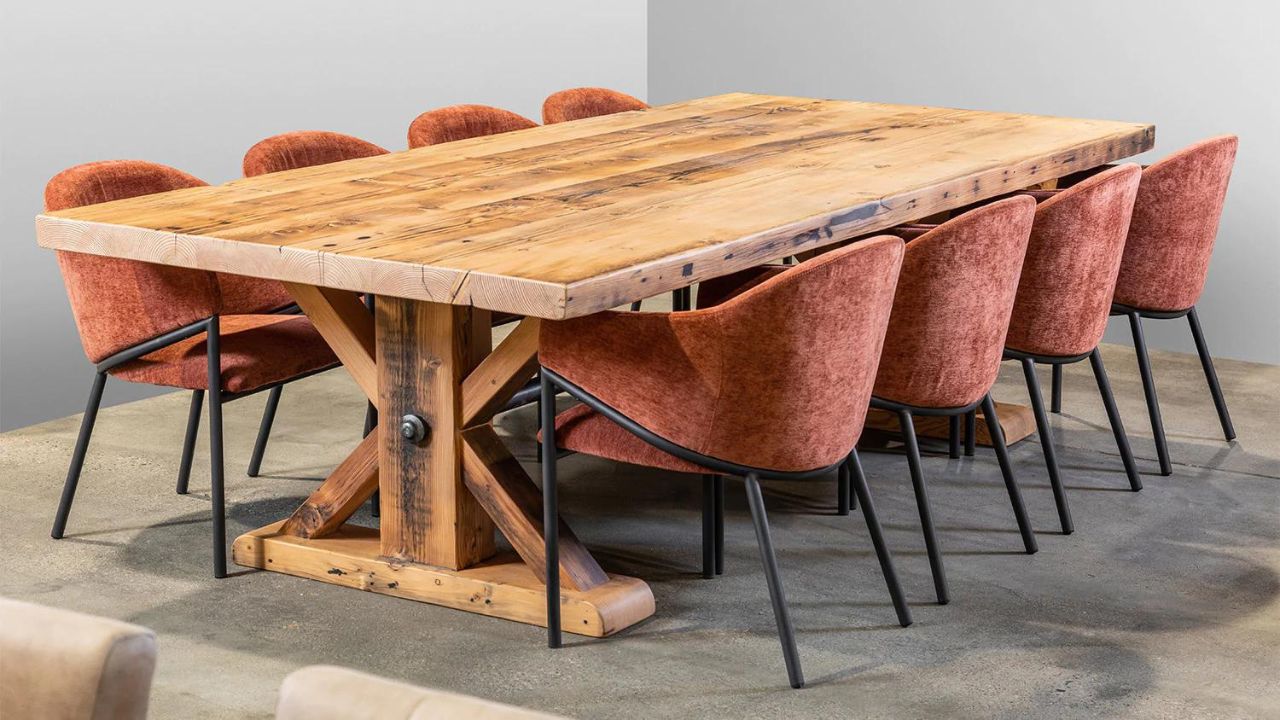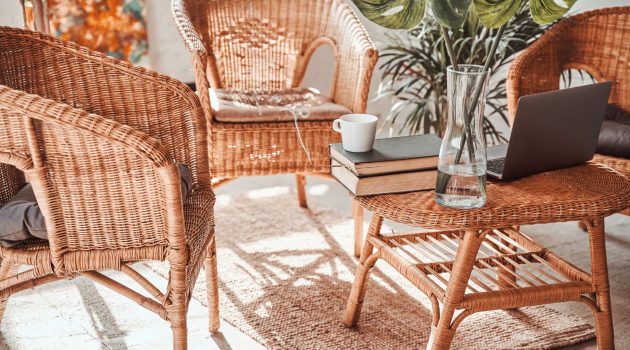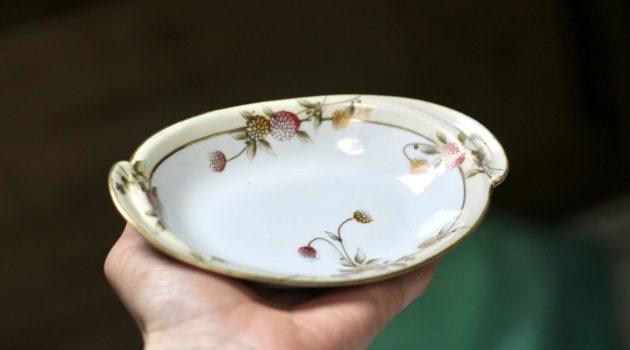In a world increasingly conscious of our environmental footprint, the choices we make within our homes are evolving.
Furniture, an integral part of our living and workspaces, is no exception to this trend.
The materials used in their production significantly impact our planet, making the selection of sustainable options a necessity rather than a luxury.
This guide will take you on a journey to discover seven of the best sustainable materials for furniture.
We’ll dive into each material’s unique characteristics, benefits, and use cases, aiming to inspire your next environmentally-friendly home or office refurbishment.
Whether you want to reduce your carbon footprint, support local businesses, or invest in long-lasting, high-quality pieces, this guide has you covered.
1. Bamboo
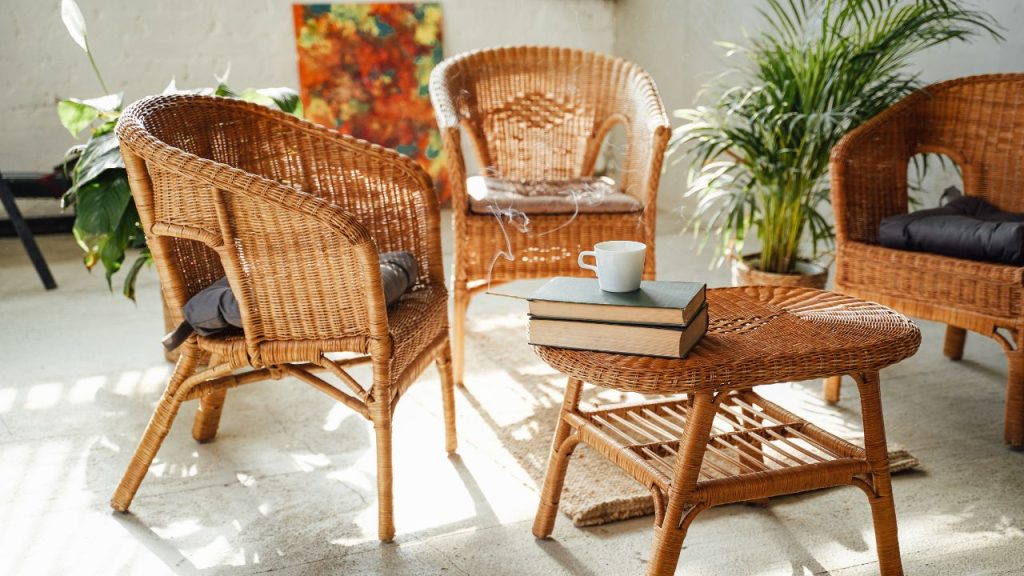
Bamboo is a rapidly renewable and versatile material, making it an excellent option for sustainable furniture production.
It’s lightweight yet sturdy and can withstand heavy loads while being flexible enough to be used in intricate designs.
Its fast growth rate and low environmental impact make it an eco-friendly alternative to traditional wood.
Bamboo has natural antibacterial properties, making it ideal for furniture used in high-moisture areas like bathrooms or kitchens.
For instance, many popular bamboo furniture pieces combine bamboo and rattan – a natural vine that grows in the rainforests of Southeast Asia.
Rattan is also eco-friendly, as it can be harvested without damaging the tree.
Together, these materials create durable and stylish furniture pieces that add a touch of nature to any space. It can be used for various furniture, including chairs, tables, and even bedding.
2. Reclaimed Wood
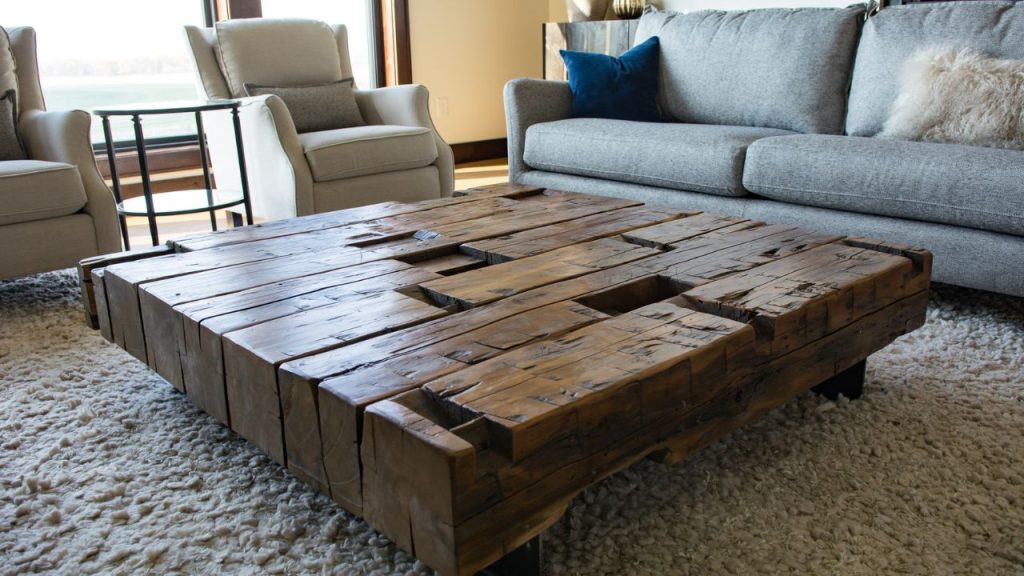
Reclaimed wood, also known as salvaged wood, is a sustainable alternative to newly harvested timber.
It refers to wood from buildings, barns, and other structures that are deconstructed and repurposed for furniture making.
Using reclaimed wood reduces deforestation and prevents waste by breathing new life into old materials.
Namely, many sustainable furniture manufacturers use reclaimed wood to produce unique and one-of-a-kind pieces.
Using furniture that tells a story and has character can add a personal touch to your living space.
It is important to learn more about a manufacturer before you buy a piece of furniture and read customer reviews and comments.
This way, you can ensure that the manufacturer uses high-quality reclaimed wood and sustainable practices in their production process.
3. Cork
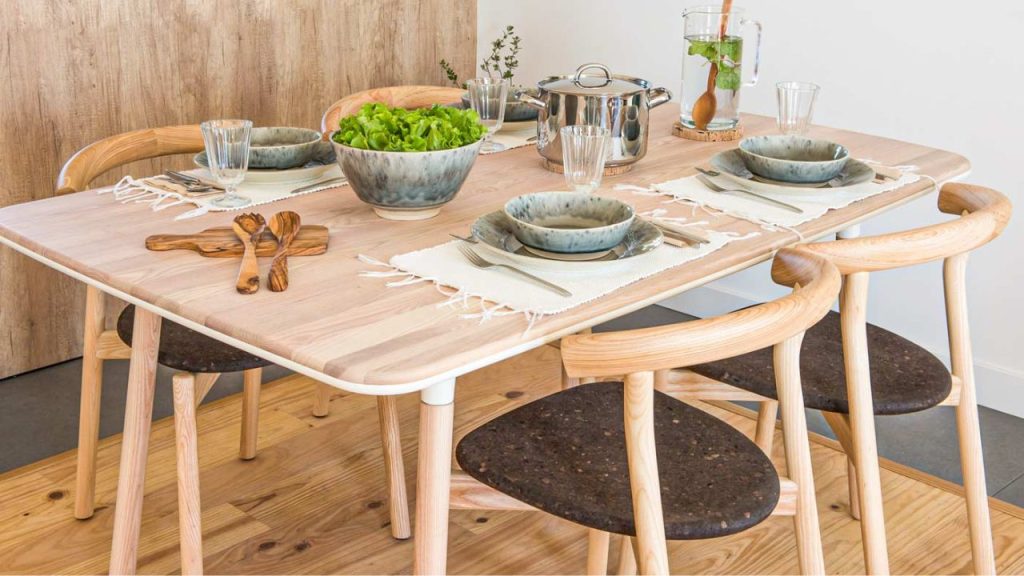
Cork comes from the bark of cork oak trees, which can be harvested every nine years without harming the tree. The harvesting process helps the tree to grow, making it a sustainable option.
Additionally, cork is durable, lightweight, and has natural insulation properties, making it an excellent choice for furniture in different environments.
Cork can be found in various types of furniture, including flooring, tabletops, and even as a cushioning material for chairs and sofas.
Its unique texture and warm color add a touch of nature to any space, making it a popular choice for sustainable furniture.
READ MORE: Affordable Wood Options for Furniture
4. Recycled Plastic
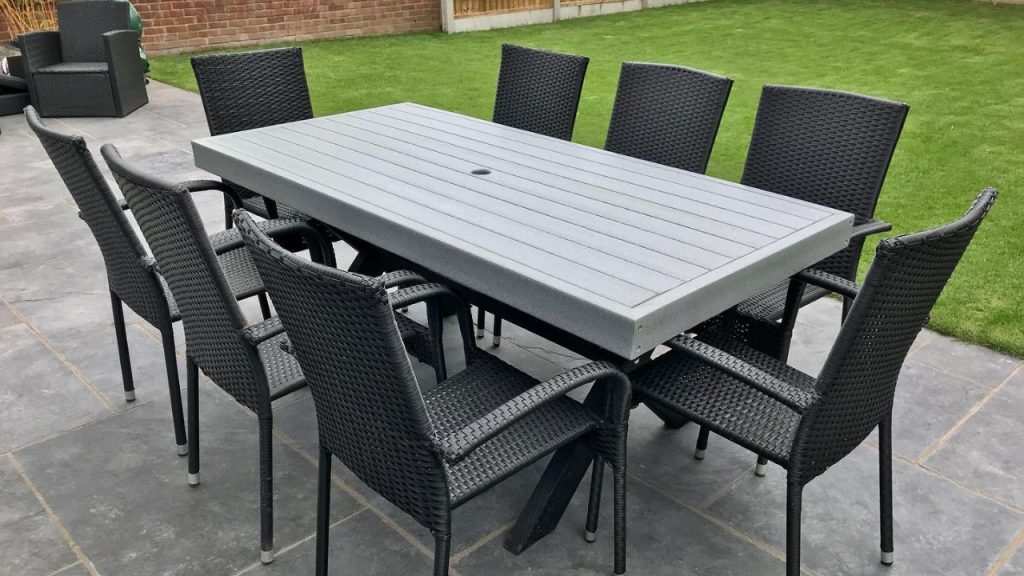
Plastic pollution poses a significant environmental challenge, but we can tackle it by incorporating recycled plastic into furniture production.
Recycled plastic can be sourced from post-consumer waste like water bottles and packaging materials and from industrial waste generated during manufacturing processes.
This versatile material can be melted down and molded into various shapes, making it an ideal choice for creating furniture.
Not only is furniture made from recycled plastic sustainable, but it is also incredibly durable and weather-resistant.
It can be used indoors and outdoors, ranging from chairs and tables for outdoor settings to shelves and storage units for interior spaces.
5. Organic Cotton
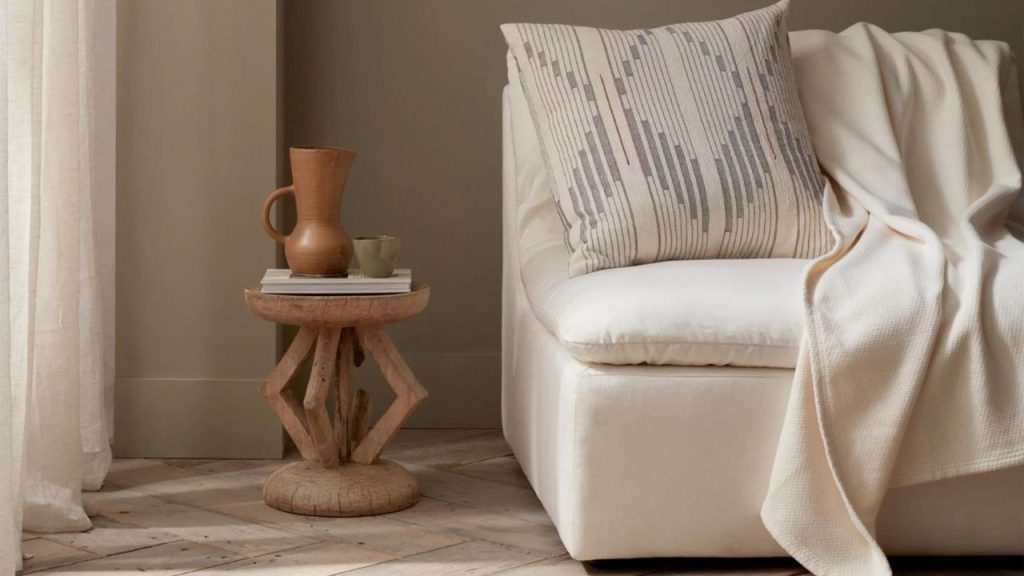
Cotton is a highly utilized material in the textile industry, however, its production can have a substantial environmental impact due to pesticide usage and water consumption.
In contrast, organic cotton is cultivated without harmful chemicals and requires less water, rendering it a more sustainable alternative.
Organic cotton can be used for furniture upholstery, creating comfortable and eco-friendly pieces.
It is also biodegradable, meaning that it can easily decompose at the end of its life cycle without causing harm to the environment.
How cotton is grown can significantly impact its sustainability, so it’s essential to look for certifications when purchasing organic cotton furniture.
6. FSC-Certified Wood
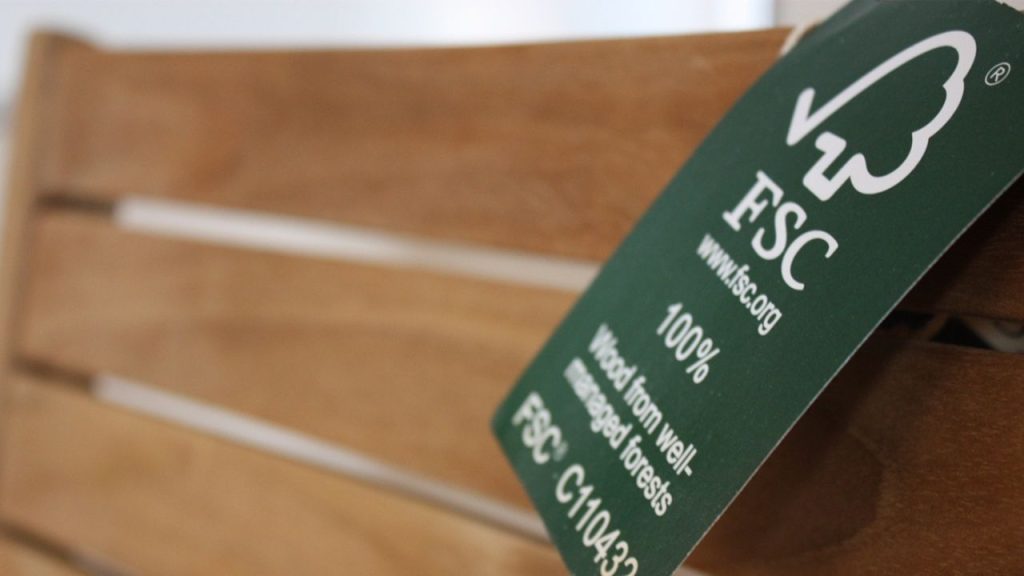
The Forest Stewardship Council (FSC) certifies wood from responsibly managed forests that follow strict environmental and social standards.
Choosing furniture made from FSC-certified wood ensures sustainable production and supports sustainable forestry practices.
Plus, FSC-certified wood is often higher quality and can last longer than furniture made from alternative materials.
Furniture using FSC-certified wood can be found in various styles and designs, from modern to rustic.
It’s also a versatile material used for different types of furniture, including bed frames, shelves, and even outdoor decks.
7. Recycled Metal
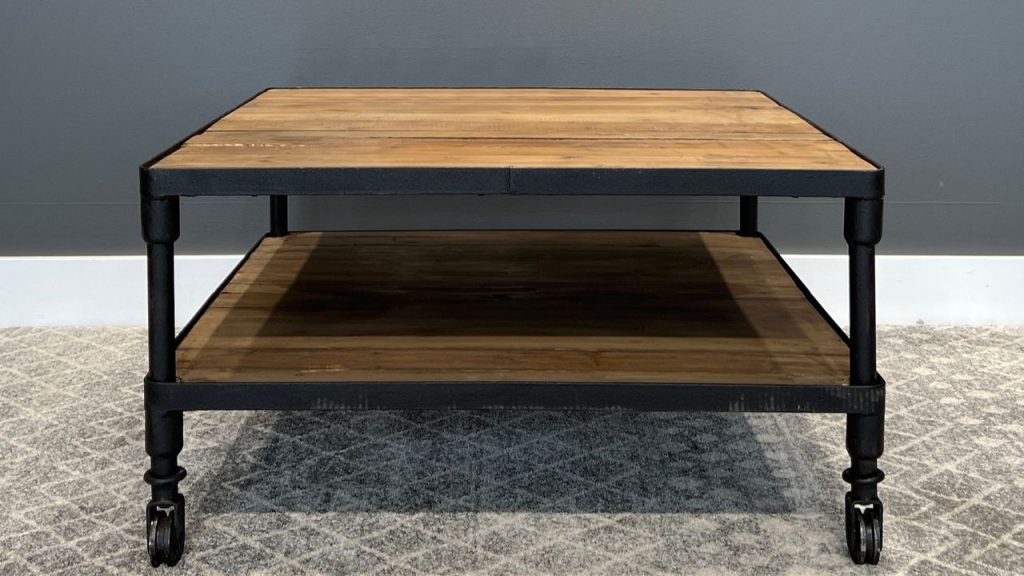
Utilizing recycled metal reduces the demand for newly extracted materials and contributes to energy conservation throughout the manufacturing process.
Recycled metal can be sourced from various items, including scrap metal, old appliances, and discarded cars.
Furniture crafted from recycled metal brings any space an industrial and modern flair.
It serves as the perfect canvas for creating distinctive statement pieces such as tables, chairs, and lighting fixtures.
Conclusion
In conclusion, the choice of materials used in furniture production can substantially impact the environment.
Opting for sustainable materials like bamboo, reclaimed wood, cork, recycled plastic, organic cotton, FSC-certified wood, and recycled metal not only aids in conserving natural resources but also plays a significant role in minimizing waste.
These eco-friendly alternatives are as durable, stylish, and versatile as their traditional counterparts, offering many options for various design aesthetics.
Next time you consider buying or replacing furniture, remember these sustainable substitutes and contribute towards a cleaner and greener planet.
Your choice can make a difference!
